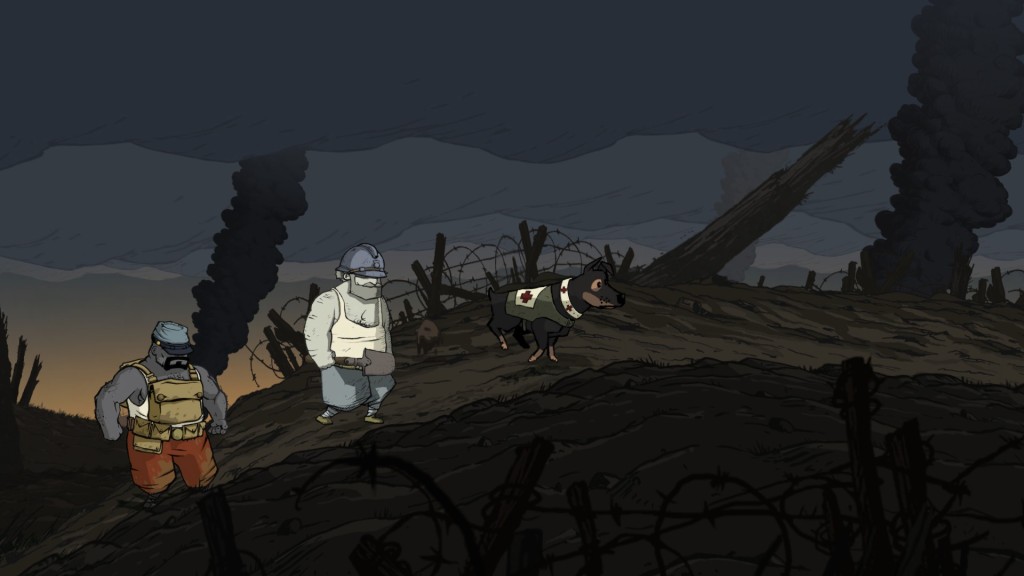Valiant Hearts wants to tell the truth about war. To do so, it uses puzzles, humour, and a goofy villain. That is the language of adventure games, but it is not the language of war, and the resulting contradiction has divided reviewers. My response was mixed – I appreciated the first half of the game, but found it “frustratingly inconsistent”.
After finishing Valiant Hearts, I’m a bit more positive – its second half features better puzzles and is truer to its themes. In the first half of the game, battle is sometimes terrifying, but just as often turns into pulling levers and carrying gears. The second half is cleverer. It reserves its baroque puzzles for sequences away from the front, where they feel much more appropriate. The second half also evokes a wider and, I think, more accurate range of emotions. Combat in the first half is uniformly negative. Combat in the second half is mostly negative – and sometimes thrilling.
Overall, Valiant Hearts receives my qualified endorsement: the less you mind the contradiction, the more you will like the game. Sometimes, it’s laugh-out-loud funny. Sometimes, it’s exhilarating. Sometimes, it’s nerve-wracking. Ultimately, it says, the war was monstrous and unjust. It strikes me as a sincere attempt to convey the emotions of World War 1, and if you can forgive its flaws, I think it’s worth a look.
